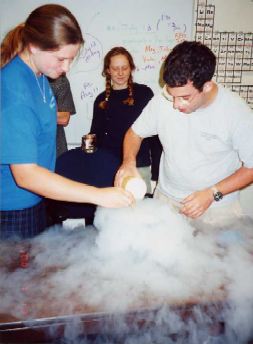Chemistry students at Carleton College are having fun with liquid nitrogen!
Click on image for full size
Image from the Carleton College Chemistry Department
Liquid Hydrogen
As shown in this picture, the element Nitrogen, when kept very cold, is a liquid. In this picture the liquid can be seen evaporating (changing
phase from a liquid to a gas).
Under conditions of extreme pressure such as those found within the giant planets, the element Hydrogen, which is normally a gas, becomes a liquid, just as Nitrogen does if the temperature is just right.
Last modified May 1, 2003 by Lisa Gardiner.
You might also be interested in:
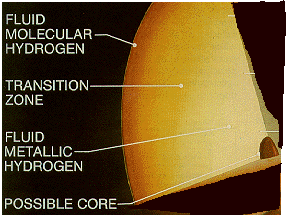
The first liquid layer inside Jupiter, immediately under the atmosphere, is the liquid hydrogen layer. The hydrogen atmosphere becomes thicker and thicker, a fog with more and more liquid hydrogen droplets,
...more
The first liquid layer inside Saturn, immediately under the atmosphere, is the liquid hydrogen layer. The hydrogen atmosphere becomes thicker and thicker, a fog with more and more liquid hydrogen droplets,
...more
AU stands for Astronomical Units. Distances in space are too large to measure in Earth standards like miles or kilometers. For distances too large to measue in AU, we use light years. A light year is the
...more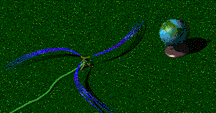
The solar wind is formed as the Sun's topmost layer blows off into space carrying with it magnetic fields still attached to the Sun. Gusts and disturbances form in the solar wind associated with violent
...more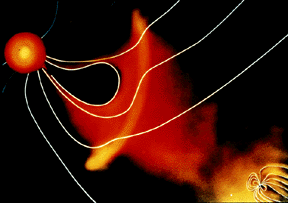
For a planet to be affected by a blob of material being ejected by the sun, the planet must be in the path of the blob, as shown in this picture. The Earth and its magnetosphere are shown in the bottom
...more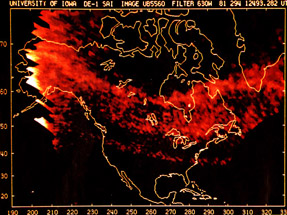
The aurora we are most familiar with is the polar aurora. This is what people are referring to when they speak of the northern or southern lights. But there are other less-known auroral activity, such
...more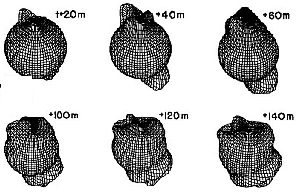
This figure shows the effect of the aurora on the atmosphere. When FAC's enter the atmosphere and create the aurora, they warm the atmosphere impulsively. This impulse travels throughout the atmosphere
...more


